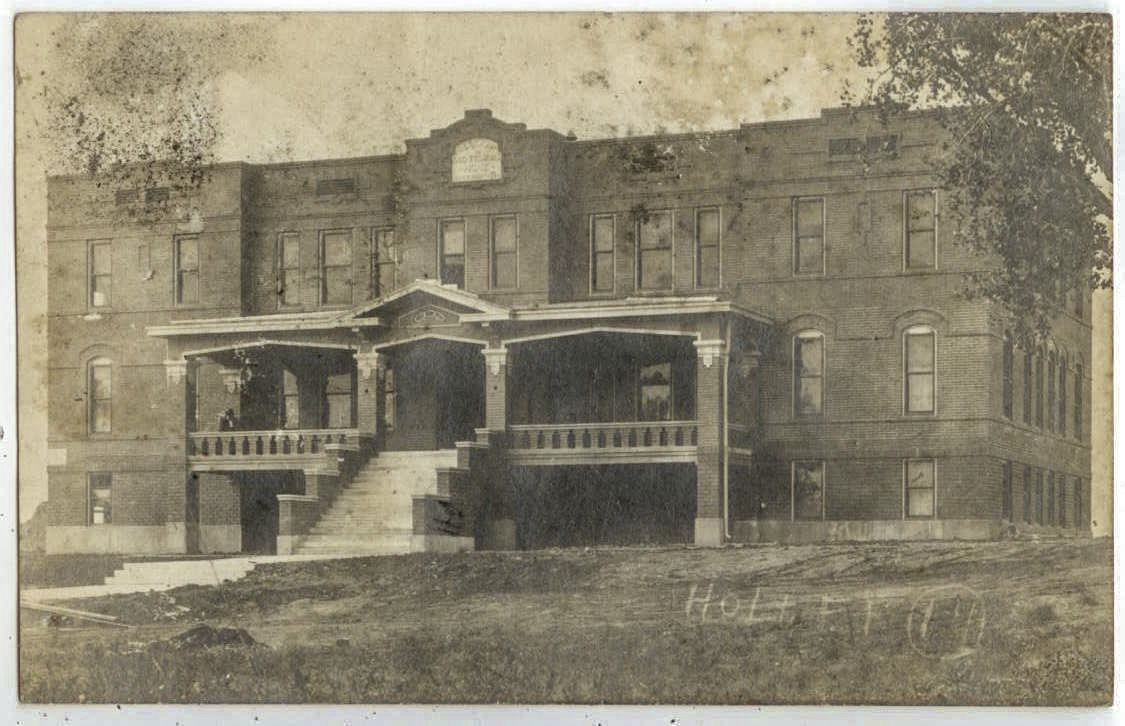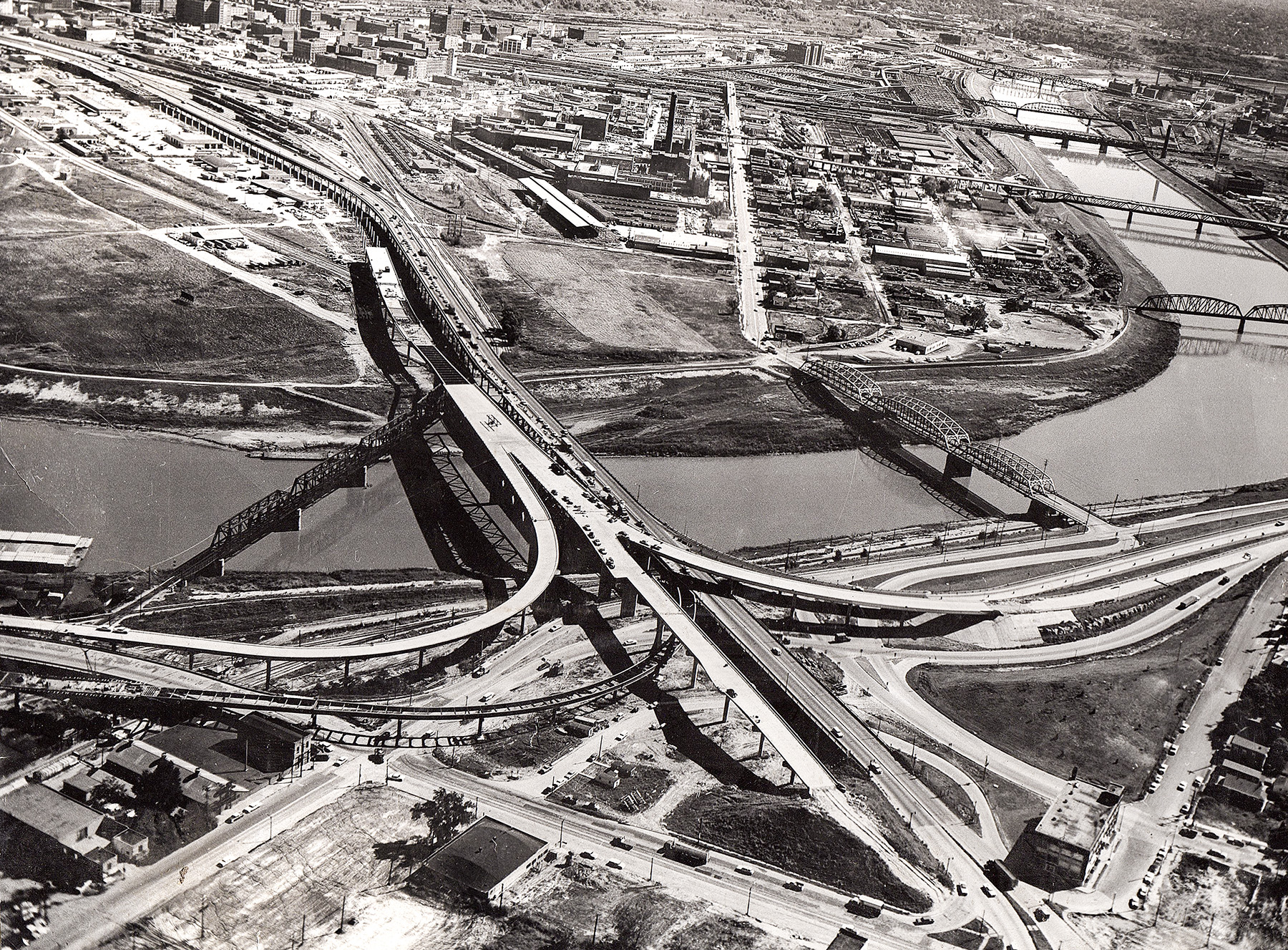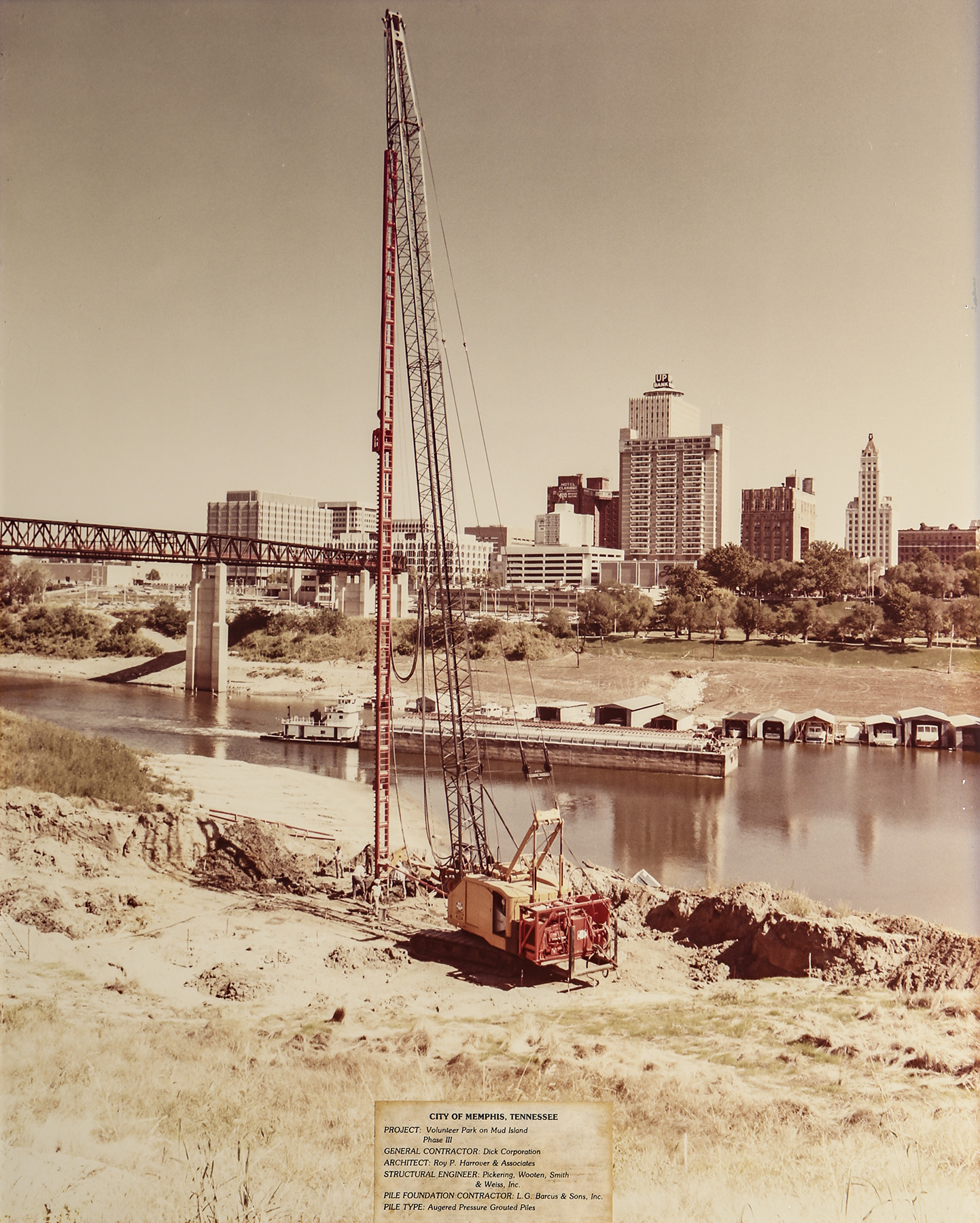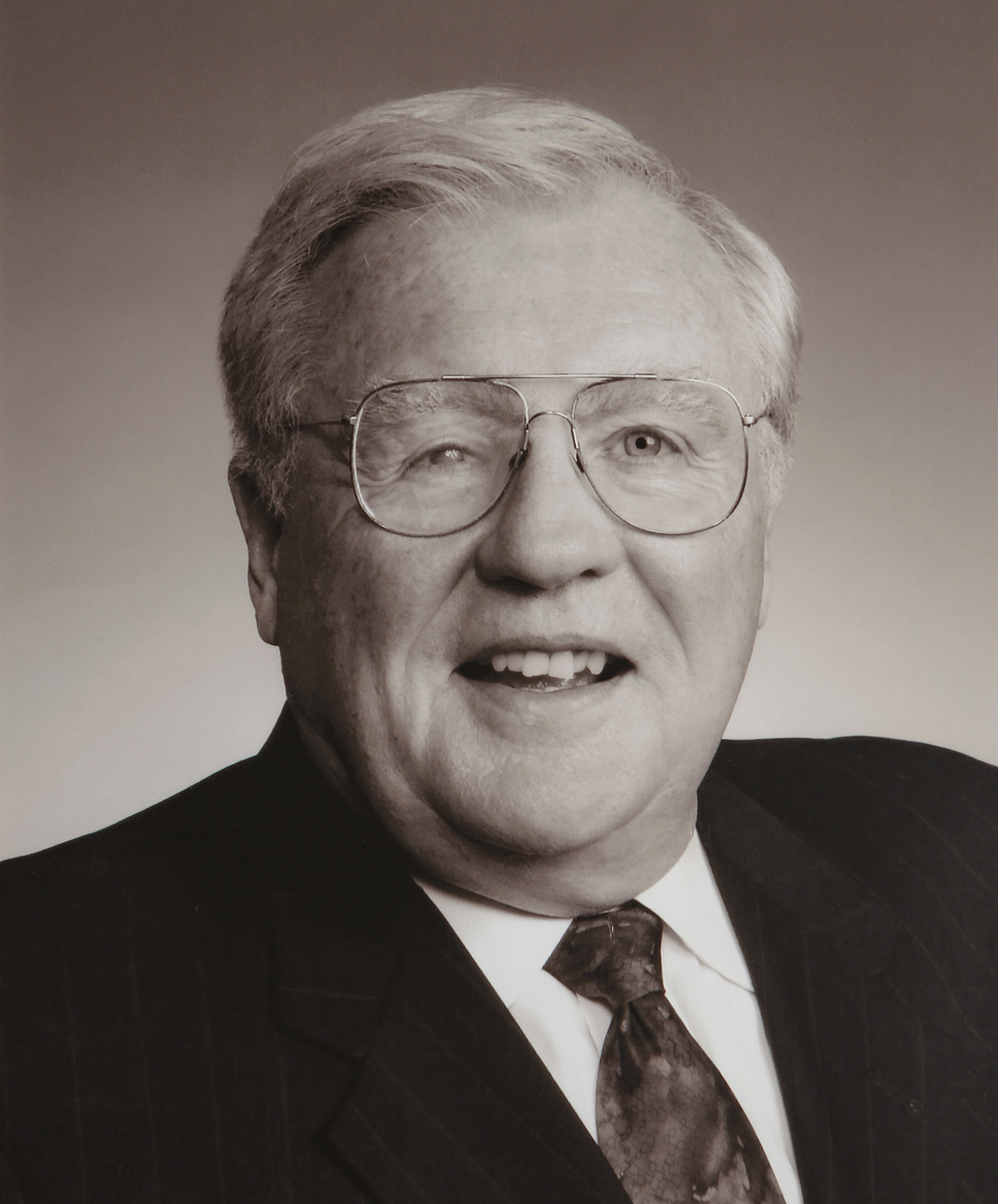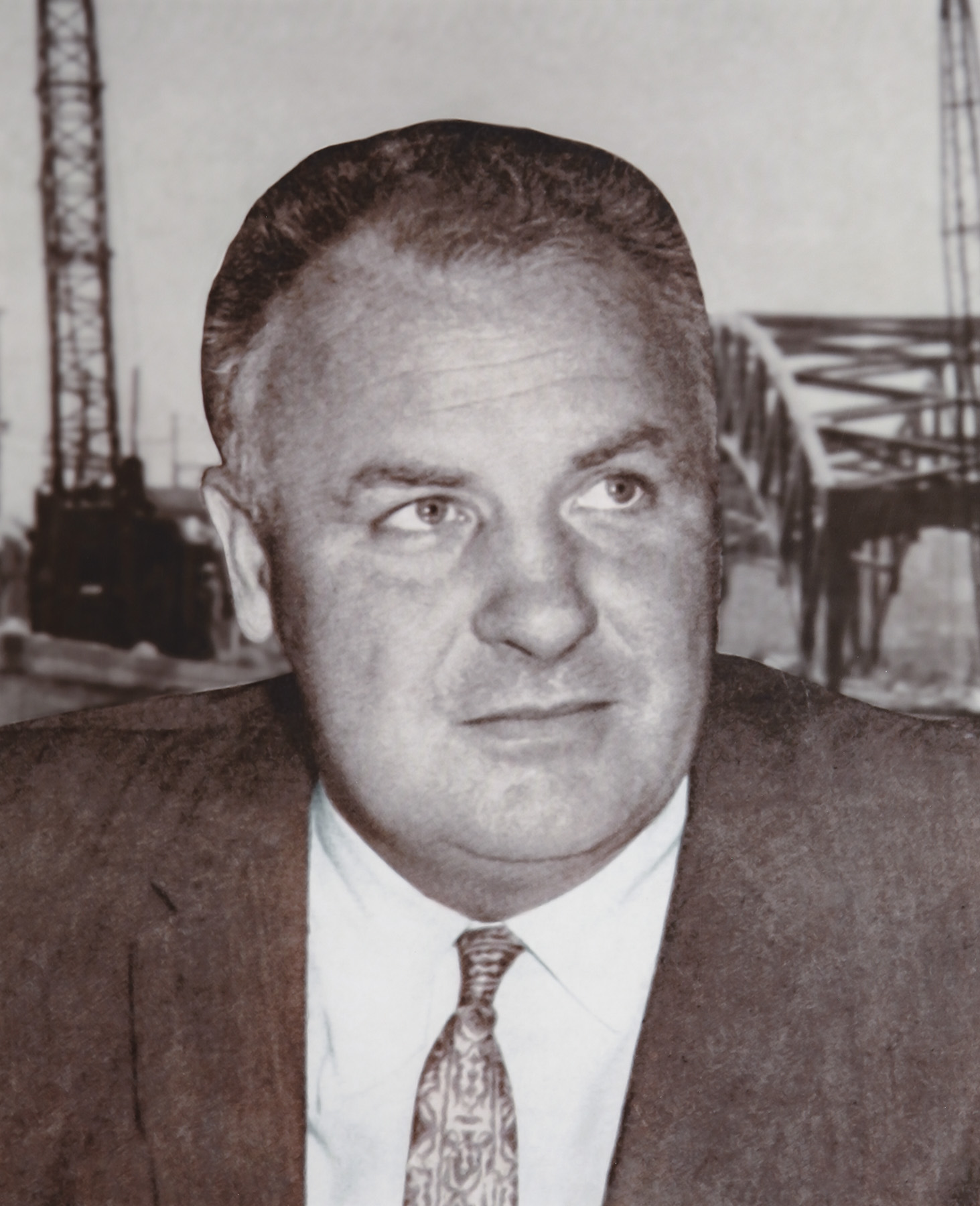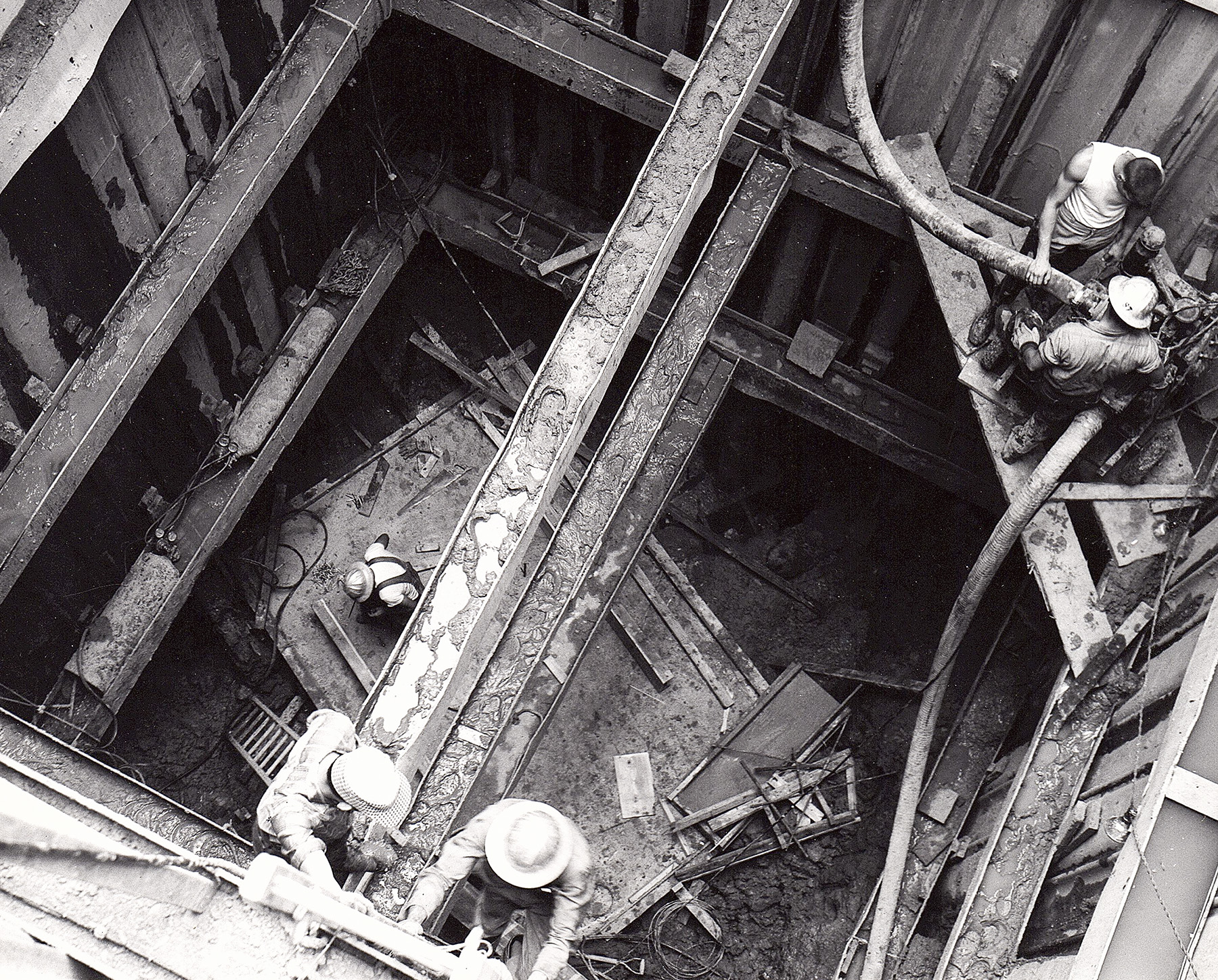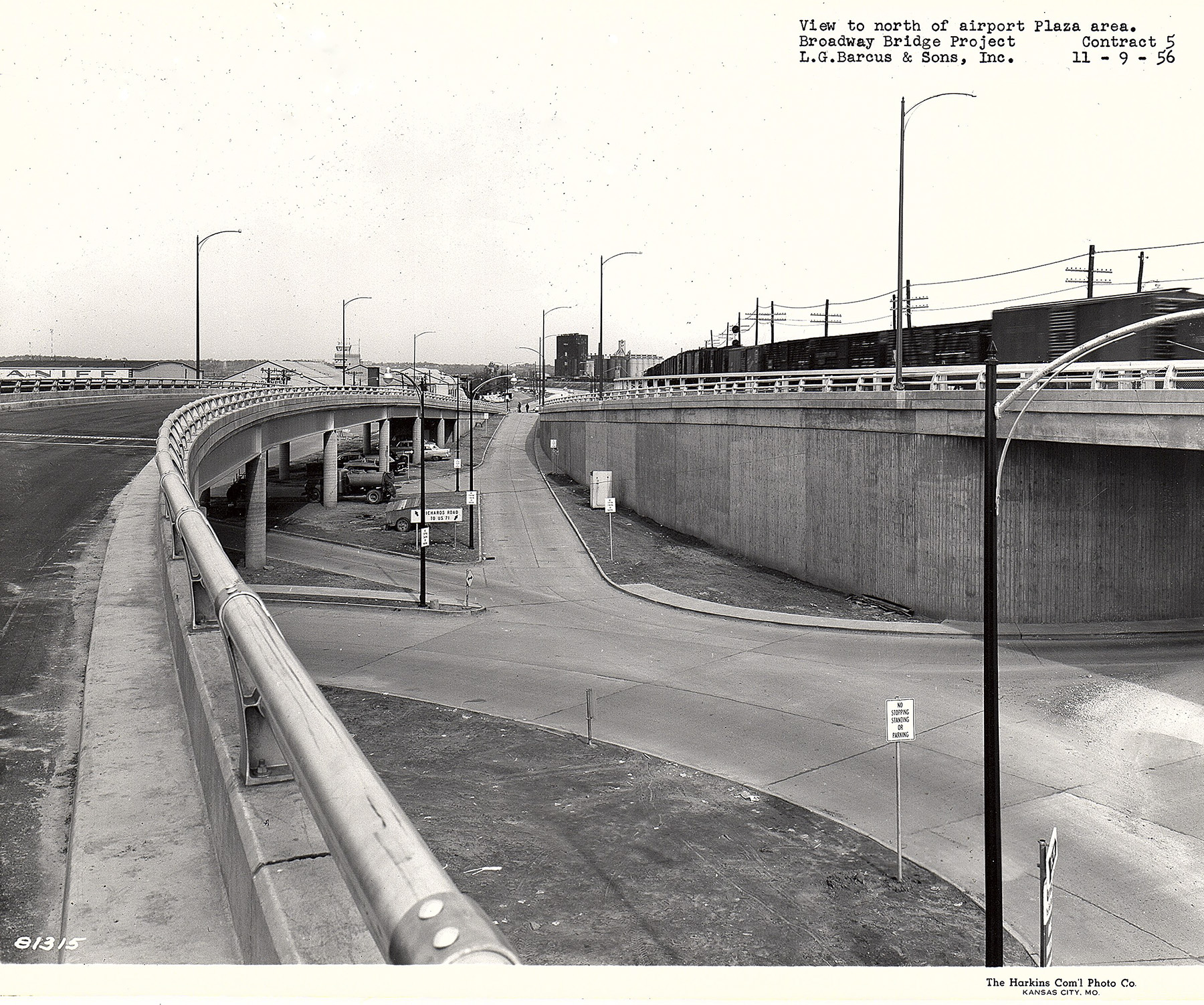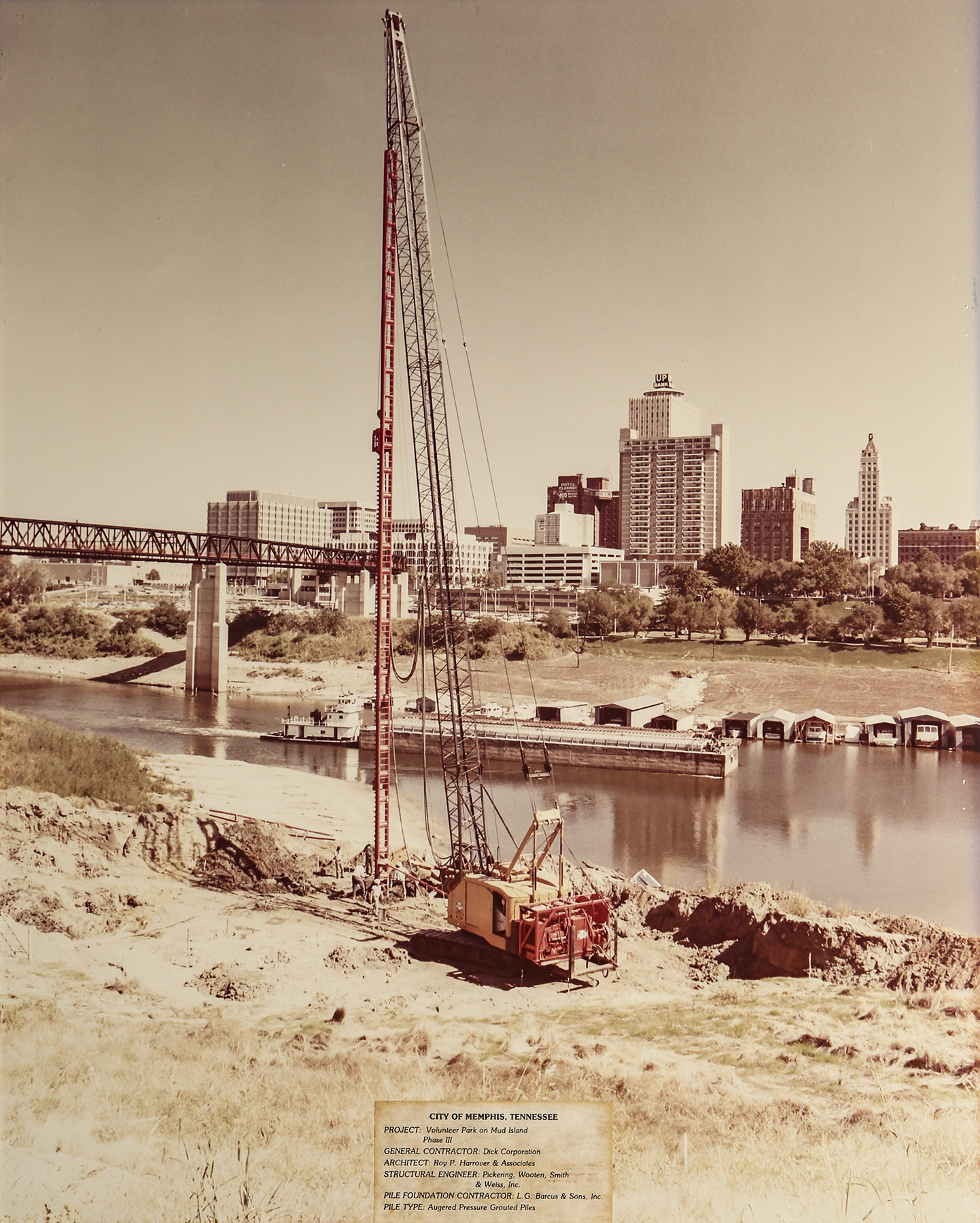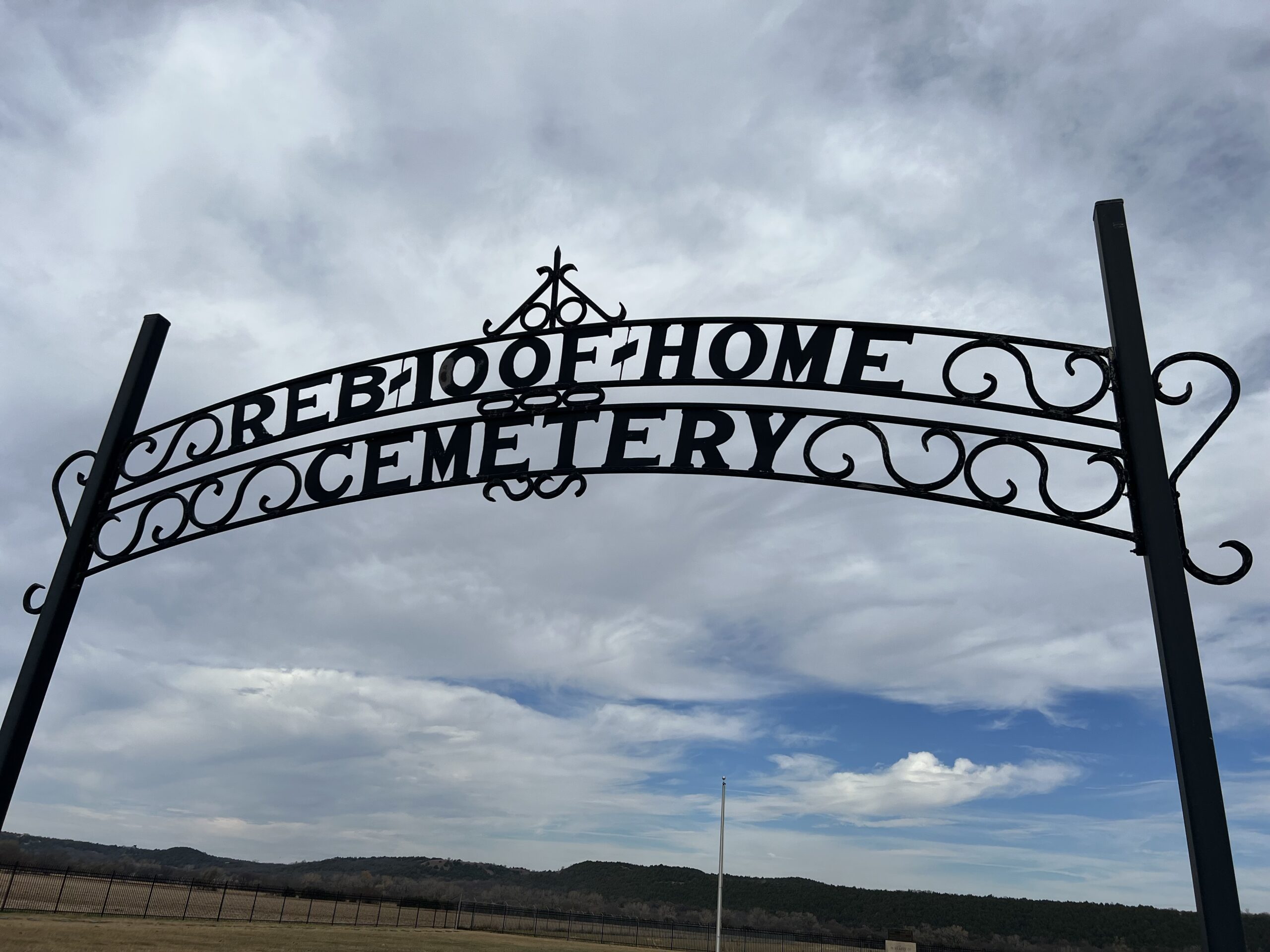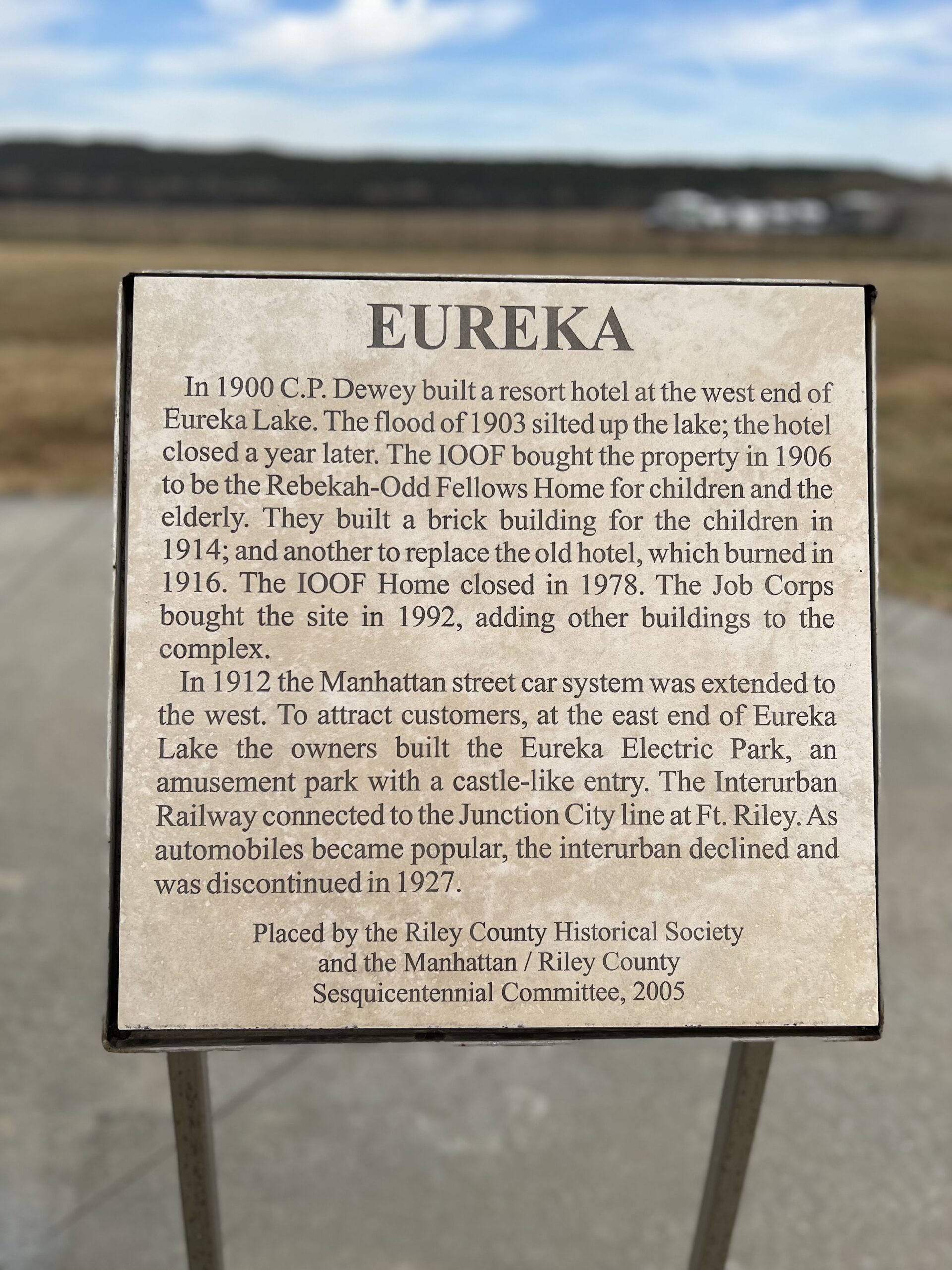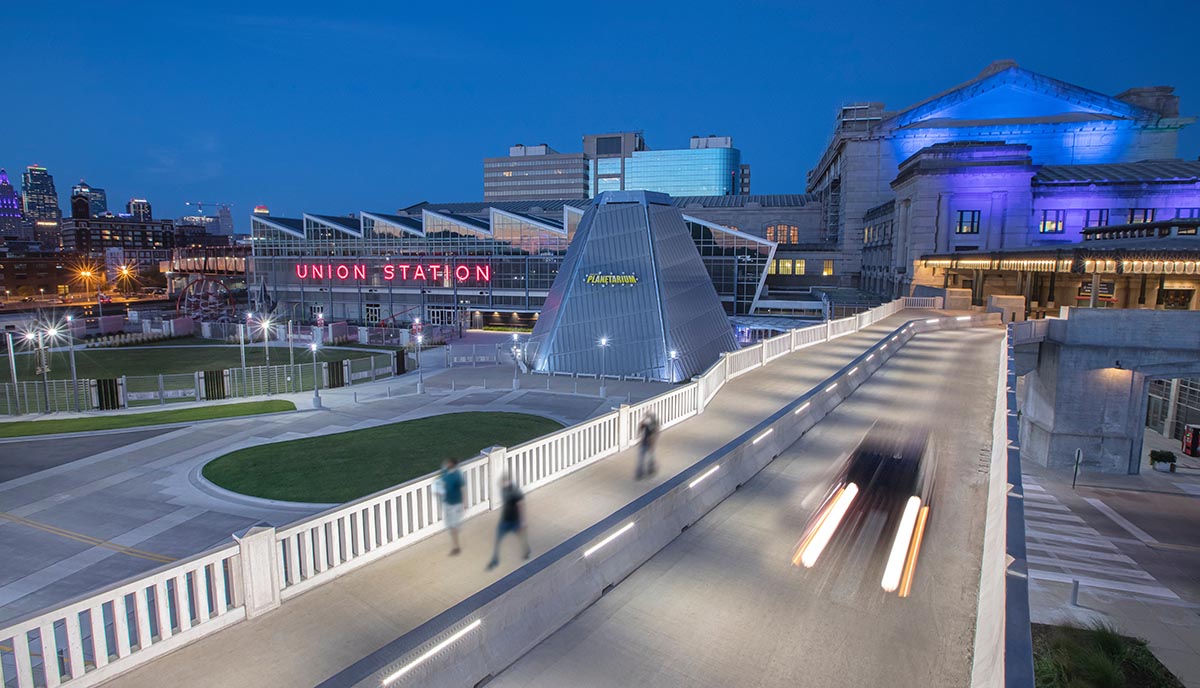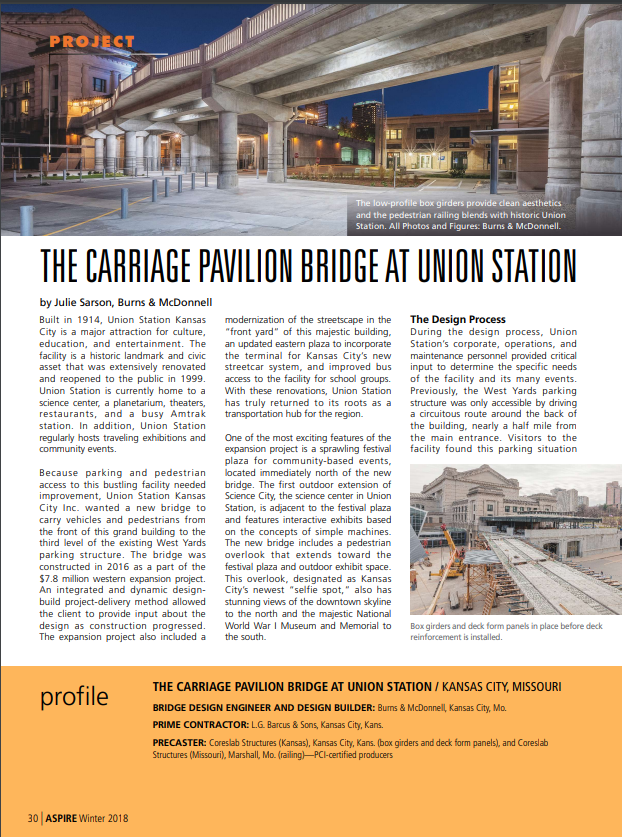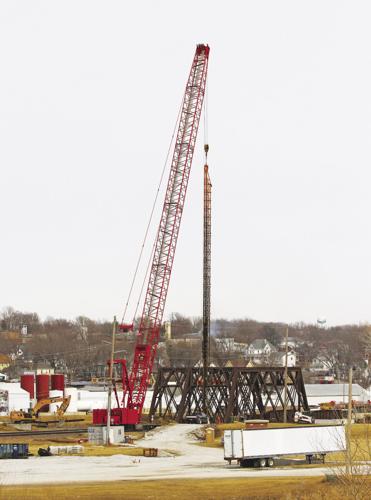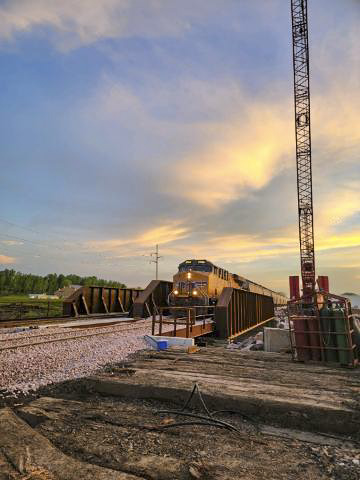One Century of History
L.G. Barcus and Sons, Inc. has been a leader in the construction industry for over 100 years, providing services to both public and private entities in 38 states. Our services consist of Deep Foundations including Augered Cast-in-Place Piles and Driven Piles, Bridge Construction, Railroad Construction and Repairs, Concrete Structures, Retaining Walls, Shoring, and Cofferdams. L.G. Barcus and Sons, Inc. is a fourth-generation family-owned company. The family started in the construction business in 1920, followed by a family partnership that was formed in 1941. By 1950 Barcus was incorporated. Here is our story.
Here is our story.
Lewis Grant Barcus (L.G. Barcus)
Lewis Grant Barcus was born on February 27th, 1892. Lewis began his notable career in 1914 as Superintendent of the Rebekah Home construction project, a brick structure that was used as a children’s home located west of Manhattan, Kansas. Today, the site is a memorial cemetery named after the Rebekah Odd Fellows home.


Lewis joined the Kansas City, Kansas Carpenters Union Local 168 on October 27th, 1919 for a $25.00 Initiation fee.
Following his induction into the union, Lewis decided to start his own construction company known as L.G. Barcus in 1920, doing residential construction and carpentry work. During his time spent on the Rebekah home project, Lewis met a young man from Cornwall, England named Fred T. Wyatt, who was the supervisor of the project’s masonry work. The two men decided to venture into the building business together as the Wyatt and Barcus Construction Company. Wyatt and Barcus construction specialized in residential builds as well as commercial masonry work in its early years. They later moved to smaller scale commercial buildings. The partnership between the two businessmen lasted until 1932 when they divided into two separate companies, the Fred T. Wyatt Construction Company, and L.G. Barcus and Sons. Fred stayed in the construction industry for many years later, while Lewis turned to heavy construction. Lewis specialized in excavation and bridge work and by 1941 the company formed a family partnership and in 1950 the company was incorporated.
At the beginning of 1960, with his sons assuming management roles, Lewis took a seat as Chairman of the Board which he held until 1984. During his time at Barcus, Lewis built relationships with companies such as Union Pacific Railroad, Kansas City Southern Railroad, and the U.S. Army Corps of Engineers. Those relationships set the foundation for over 100 years of construction services and still hold strong to this day.
By being one of the key contractors in Kansas City’s early construction life, Barcus built a reputable name for itself. Key city projects, including the construction of the original Broadway Bridge and the Inter-City Viaduct, followed the Barcus name making the company known to be a reliable Kansas City construction company.

William Grant Barcus
 William Grant Barcus, better known as Grant Barcus, began his career during the summer construction season of 1930 as the jobsite water boy. Years later, Grant became a Superintendent for Barcus and would eventually work his way through the ranks to be the second Chairman of the Board for L.G Barcus from 1984-1990. Grant spent most of his time visiting one of Barcus’ many complex projects in the Kansas City area. He was instrumental in the formation of the Heavy Constructor’s Association of Kansas City and was very active on the labor committee. Grant was the president of the Kansas and Missouri Council of the Mississippi Valley Association, a member of the board of directors of the Security National Bank and a member of the board of directors of the Kansas State Chamber of Commerce. Grant was also a past president of the Kansas City Kansas Kiwanis Club and a member of the Board of Education. In 1940 Grant and his brother, Roy Barcus, became partners with their father, Lewis.
William Grant Barcus, better known as Grant Barcus, began his career during the summer construction season of 1930 as the jobsite water boy. Years later, Grant became a Superintendent for Barcus and would eventually work his way through the ranks to be the second Chairman of the Board for L.G Barcus from 1984-1990. Grant spent most of his time visiting one of Barcus’ many complex projects in the Kansas City area. He was instrumental in the formation of the Heavy Constructor’s Association of Kansas City and was very active on the labor committee. Grant was the president of the Kansas and Missouri Council of the Mississippi Valley Association, a member of the board of directors of the Security National Bank and a member of the board of directors of the Kansas State Chamber of Commerce. Grant was also a past president of the Kansas City Kansas Kiwanis Club and a member of the Board of Education. In 1940 Grant and his brother, Roy Barcus, became partners with their father, Lewis.
Ten years later Barcus was incorporated. At that time the officers of the company were L.G. Barcus as the President; Grant Barcus as the Vice President and Roy Barcus as the Secretary-Treasurer. In 1957, Grant’s son, Lawrence (Larry), and Roy’s son, Bill, became Vice Presidents of the company. As President of L.G. Barcus, 1960 in Kansas City was a difficult year to lead a major construction company. All Barcus jobs in the Kansas City area were down from April to July due to the construction strike. Barcus was also performing work in surrounding states, but the market was competitive. River bridges and heavy substructures were Grant’s specialty. To successfully accomplish this type of work, Grant used a variety of dragline cranes, all of which he moved around the four-state area; three Link-Belts, two Marions, an American, a P&H, an Osgood, and two old Marion steam cranes; which in 1960, were still being used to drive pile.
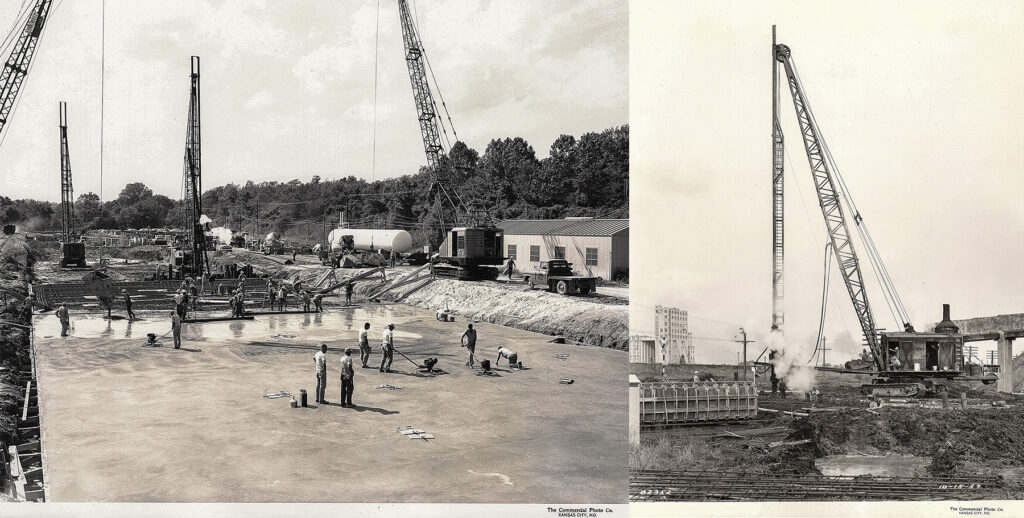
One of Grants more notable accomplishments was constructing the deepest open pier hole, an open cofferdam that was ninety feet deep for the K7 Highway over the Kaw River project located in Bonner Springs, Kansas. The river piers entailed the excavation of fifty feet of clay, five feet of rock, and forty feet of water bearing sand. 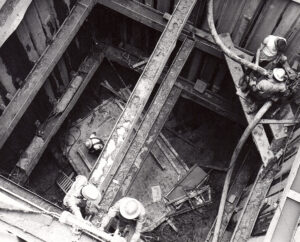
Barcus was awarded the Annual Bridge Award Competition for the “Most Beautiful Bridges Built During 1960” presented by the American Institute of Steel Construction, Inc for this project.
Lawrence Grant Barcus
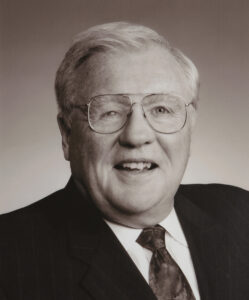 Lawrence (Larry) Grant Barcus was born December 6th 1937. He was the third Chairman of the Board for L.G Barcus and Sons, Inc. Larry served from 1990 to 2008 on the board, beginning his construction journey many years earlier and staying involved many years later. Larry’s passion for construction began while serving in the United States Air Force, building planes. He was a member of the board of directors for Anadarko Petroleum based in Houston Texas for 25 years and a two-time President of the Heavy Contractors Association of Kansas City. Larry assisted in the startup of several banks and served as Chairman of the Board at Home State Bank-KCK, Community First Bank-KCK, First Community Bank-KCK, Wyandotte Bank-KCK, First America Bank-KCK, and the Edwardsville Bank- Edwardsville, Kansas. With Larry’s many business ventures, it is no surprise that he was the perfect candidate to lead L.G. Barcus and Sons Inc. As Chairman of the Board, Larry led the company through many great projects such as, the foundation work for the first phase of the Boulevard Brewhouse in 2005, the KCI Terminal Bridges at the Kansas City International Airport, the substructure of I-435 over the Kansas River, the foundation work for the Astor Hotel in New Orleans, Louisiana, multiple foundation projects at Saint Jude’s Medical Center in Memphis, Tennessee, the AugerPile foundations for the American Royal building in the west bottoms of Kansas City and the pipe pile foundations for Kemper (Hy-Vee) Arena, also located in the west bottoms of Kansas City.
Lawrence (Larry) Grant Barcus was born December 6th 1937. He was the third Chairman of the Board for L.G Barcus and Sons, Inc. Larry served from 1990 to 2008 on the board, beginning his construction journey many years earlier and staying involved many years later. Larry’s passion for construction began while serving in the United States Air Force, building planes. He was a member of the board of directors for Anadarko Petroleum based in Houston Texas for 25 years and a two-time President of the Heavy Contractors Association of Kansas City. Larry assisted in the startup of several banks and served as Chairman of the Board at Home State Bank-KCK, Community First Bank-KCK, First Community Bank-KCK, Wyandotte Bank-KCK, First America Bank-KCK, and the Edwardsville Bank- Edwardsville, Kansas. With Larry’s many business ventures, it is no surprise that he was the perfect candidate to lead L.G. Barcus and Sons Inc. As Chairman of the Board, Larry led the company through many great projects such as, the foundation work for the first phase of the Boulevard Brewhouse in 2005, the KCI Terminal Bridges at the Kansas City International Airport, the substructure of I-435 over the Kansas River, the foundation work for the Astor Hotel in New Orleans, Louisiana, multiple foundation projects at Saint Jude’s Medical Center in Memphis, Tennessee, the AugerPile foundations for the American Royal building in the west bottoms of Kansas City and the pipe pile foundations for Kemper (Hy-Vee) Arena, also located in the west bottoms of Kansas City.
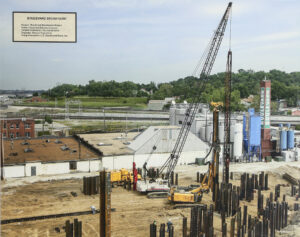 The most notable influence Larry had with the company was the start of the AugerPile division in 1974. With Barcus already excelling in the installation of timber piles, h-piles, pipe piles, and precast piles, it was only natural to expand into AugerPiles. In the early 1970’s AugerPiles became a more common foundation method for sandy soils, however they were generally not accepted due to the difficulty in understanding the advanced technology and the obstacle of pile-inspection. At this time, AugerPiles were more commonly found on private jobs for engineers who had close relationships with the three primary AugerPile contractors. They are more cost and time efficient since they do not require casings. For this reason, AugerPiles have become more common on large scale projects. Larry developed plans to design a rig that was capable of installing AugerPiles to keep up with the market demand. Rather than starting from scratch, Larry reached out to one of the three main AugerPile contractors and formed a regional partnership with them. During the duration of the arrangement, Barcus determined they were unhappy with the future of AugerPiles and refused to accept its limitations.
The most notable influence Larry had with the company was the start of the AugerPile division in 1974. With Barcus already excelling in the installation of timber piles, h-piles, pipe piles, and precast piles, it was only natural to expand into AugerPiles. In the early 1970’s AugerPiles became a more common foundation method for sandy soils, however they were generally not accepted due to the difficulty in understanding the advanced technology and the obstacle of pile-inspection. At this time, AugerPiles were more commonly found on private jobs for engineers who had close relationships with the three primary AugerPile contractors. They are more cost and time efficient since they do not require casings. For this reason, AugerPiles have become more common on large scale projects. Larry developed plans to design a rig that was capable of installing AugerPiles to keep up with the market demand. Rather than starting from scratch, Larry reached out to one of the three main AugerPile contractors and formed a regional partnership with them. During the duration of the arrangement, Barcus determined they were unhappy with the future of AugerPiles and refused to accept its limitations.
 The agreement was then terminated and Barcus was required to avoid all AugerPile jobs for an 18-month period. Not long after Barcus started gaining momentum in AugerPiles, we installed the AugerPile foundations to build the Mud Island River Park in the Mississippi River, located in Memphis, Tennessee. The piles were 14 inch diameter and 105 feet deep, which at the time, was unheard of. Even to this day, Mud Island is a manmade island that serves as a river walk and features many tourist attractions including the Mississippi River Museum, Harbor Town, and is home to many great restaurants and recreational activities.
The agreement was then terminated and Barcus was required to avoid all AugerPile jobs for an 18-month period. Not long after Barcus started gaining momentum in AugerPiles, we installed the AugerPile foundations to build the Mud Island River Park in the Mississippi River, located in Memphis, Tennessee. The piles were 14 inch diameter and 105 feet deep, which at the time, was unheard of. Even to this day, Mud Island is a manmade island that serves as a river walk and features many tourist attractions including the Mississippi River Museum, Harbor Town, and is home to many great restaurants and recreational activities.
The market for AugerPiles was still a tough one to be in at this point, until DFI (Deep Foundations Institute) published the first ever Auger Cast-in-Place manual.
Richard W. Hoener
Richard W. Hoener is the only non-Barcus family member to lead the company. He came to Barcus in 1970 after graduating in 1968 from the University of Kansas with a degree in Civil Engineering and Business Administration. He started his career working as a field engineer on the KCI terminal bridges. He came into the office and became an estimator for both bridge and pile jobs. As the pile work became a larger part of Barcus’ business, Richard focused on growing the Pile Division geographically as well as establishing internal procedures. He obtained pile contractor and general contractor licenses throughout the southeast. Richard managed the Interpile office in Fort Lauderdale, started and managed Barcus division offices in Beaumont, Texas; Atlanta, Georgia; Blue Bell, Pennsylvania and New Orleans, Louisiana. Mr. Hoener formed the Augered Cast-in-Place Pile Committee within the Deep Foundations Institute. The first committee meeting was held at the Marriott Hotel at KCI. He decided to write the Augered Cast-in-Place Pile Manual as a specification with commentary so that Engineers and Architects could understand installation and quality control procedures. The ACIP industry and Barcus’ ACIP business benefited greatly from the publication by DFI of the Manual in 1990. Our Pile Division became one of the largest, most respected Augerpile companies in the country. Richard was President of the Deep Foundations Institute, a member of the Moles and an ASCE life member. He was President and CEO for over 25 years until Doug Barcus transitioned into the role of President.
Douglas Grant Barcus – Present
 L.G. Barcus and Sons Inc. is now a fourth-generation family-owned company. Douglas Grant Barcus is the current Chairman of the Board. He started his career at the company in 1983. As with all previous generations, Doug started from the bottom as a “Gopher” and worked his way up through the ranks as a laborer, foreman, superintendent, project manager, vice president and then president. While working and starting a family, Doug also earned his bachelor’s degree in business administration through Baker University. After over 100 years in the construction industry, Barcus is still performing bridge, structural concrete, structural steel, dam repair, sheeting and shoring and deep foundation work, not only in Kansas City, but all over the United States. Barcus’ most recent endeavor has been horizontal boring, which started in 2018. Horizontal boring is a great method that entails the pipe installation without the need for open excavation.
L.G. Barcus and Sons Inc. is now a fourth-generation family-owned company. Douglas Grant Barcus is the current Chairman of the Board. He started his career at the company in 1983. As with all previous generations, Doug started from the bottom as a “Gopher” and worked his way up through the ranks as a laborer, foreman, superintendent, project manager, vice president and then president. While working and starting a family, Doug also earned his bachelor’s degree in business administration through Baker University. After over 100 years in the construction industry, Barcus is still performing bridge, structural concrete, structural steel, dam repair, sheeting and shoring and deep foundation work, not only in Kansas City, but all over the United States. Barcus’ most recent endeavor has been horizontal boring, which started in 2018. Horizontal boring is a great method that entails the pipe installation without the need for open excavation.

For Barcus, this work is primarily done for the railroad industry but can be done to install smooth steel pipe in any environment. In northern Missouri, Barcus pushed a 60 inch diameter pipe, 360 feet through the side of a hill and under railroad tracks for Union Pacific Railroad to allow for drainage and prevent washouts.
Barcus’ roots have always been in Kansas City and we are very passionate about building our city. In 2016, Barcus was able to help reconstruct a crucial part of Kansas City’s famous Union Station by building a pavilion bridge capable of carrying vehicle and pedestrian traffic from the front of the monumental building to the third level of the existing west yards parking garage.

Barcus’ bridge work has primarily resided in railroad work over the recent years. In June of 2022, Barcus performed a 32 hour railroad bridge replacement in Denison Iowa, that consisted of the demolition and replacement of a 110 year old bridge. The bridge was originally a 170 foot long, double track bridge containing a through truss span. It was replaced by a 203 foot long double track steel span weighing in at 536 Tons. Barcus utilized multiple pieces of equipment for this replacement, including a 650-ton crane and a 500 ton Hydra-Slide Skid System to safely and effectively assemble and set the span into place.

Barcus is still a leading contractor in the AugerPile industry with many fascinating recent projects including the Ternium Warehouse in Shreveport LA, The Hyatt Place Hotel in Houston TX, Tulane University’s Student housing additions in New Orleans, LA, the National Beef Plant in Liberal, KS, New Mexico State University’s AG Modernization, the Holcim Cement Dome in Fremont, NE, the Century Casino Hotel in Cape Girardeau, MO, and the University of Memphis Music Center in Memphis, TN.
Barcus has become involved in many organizations over the years including, but not limited to, Corporate members of AGC, Members of AGC Missouri, AGC Kansas City, Heavy Constructors Association, Deep Foundations Institute (DFI), AREMA, ASLRRA, and The Builders Association since 1956. In just over 100 years, L.G. Barcus and Sons, Inc. has completed over 5,000 documented construction projects all over the nation with no intentions on stopping anytime soon. Building a solid foundation for many more years of history and generations to come.


